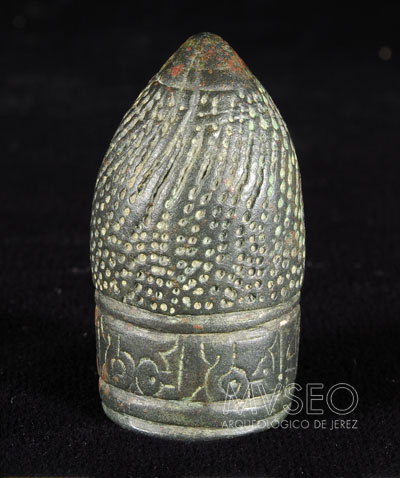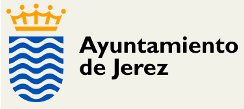LEATHER-WORKER’S THIMBLE WITH EPIGRAPHY
Islamic Period
LEATHER-WORKER’S THIMBLE WITH EPIGRAPHY
Bronze.
Height: 4.7 cm. Maximum diameter: 2.4 cm.
Hispano-Muslim. 10th - 11th century.
Origin
Mesas de Asta. Jerez de la Frontera. Cádiz.
Description
Large piriform thimble, with slightly convex cylindrical body and pointed tip. Made by using the 'lost wax' technique. As is common in this type of object, the body has a pointed middle part (possibly done with hammer and chisel) to grip the pin, forming slanting spiral lines. There is an epigraphic inscription on the base framed between parallel incised double lines, which reads: baraka min Allah wa-yumn abadan: ”God's blessing and happiness forever”. It can be dated back to between the 10th and 11th centuries by its letter type. This type of thimble has thick walls and narrow mouth for the thumb, and was used in leather-work and shoe-making.
Bibliography
- González, R.; Barrionuevo, F. y Aguilar, L. (1997): Museo Arqueológico Municipal de Jerez de la Frontera. 'Municipal Archaeological Museum of Jerez de la Frontera' Ayuntamiento de Jerez, p. 101.

